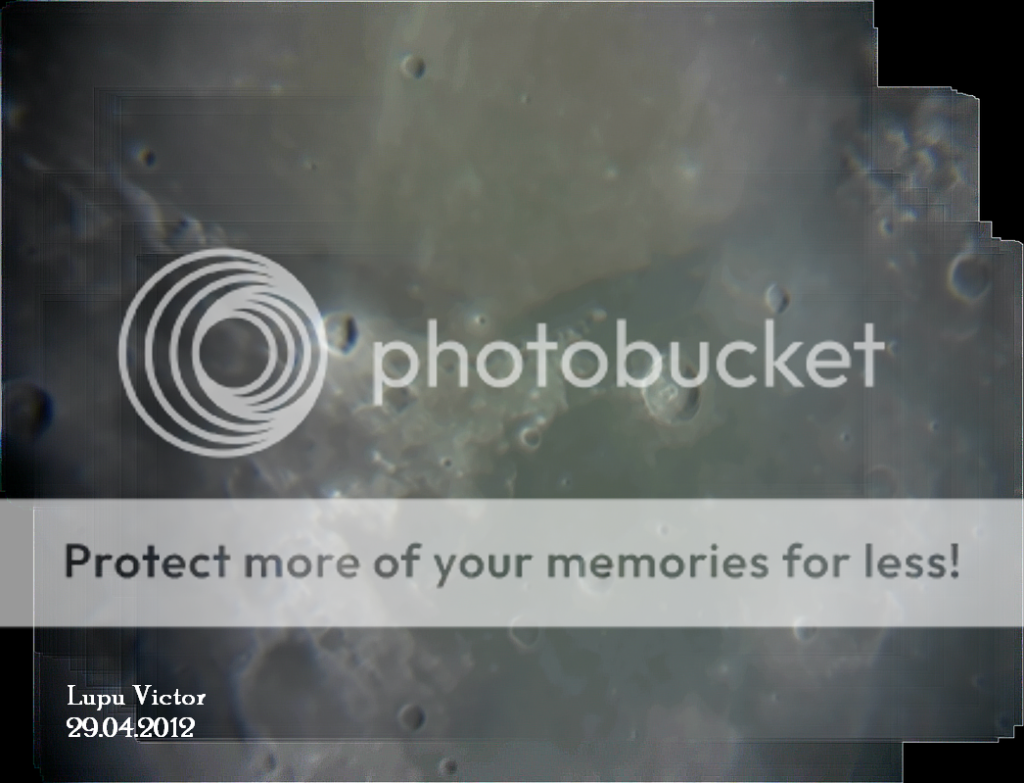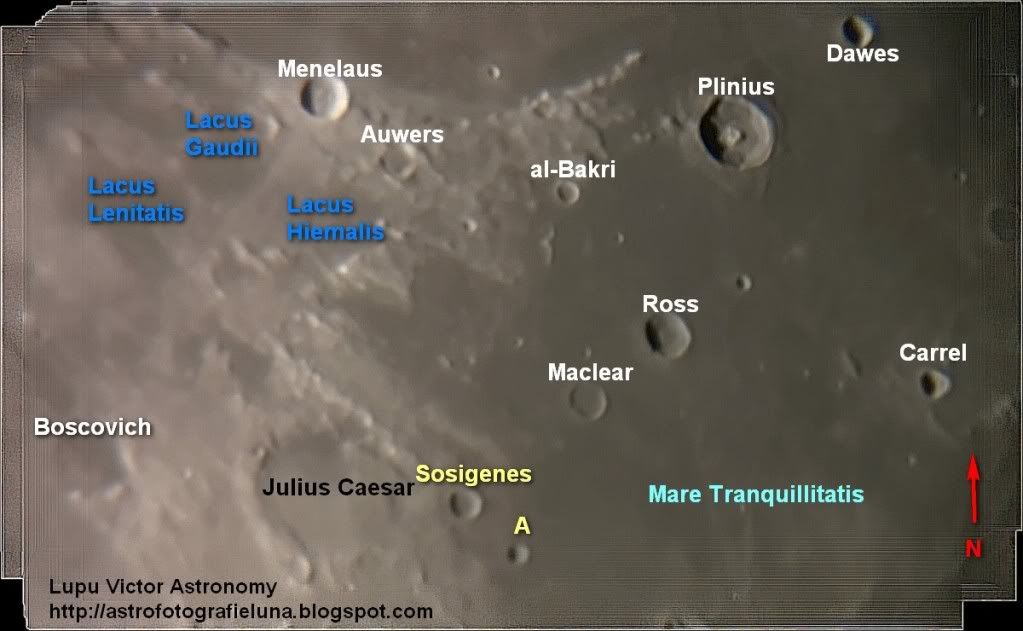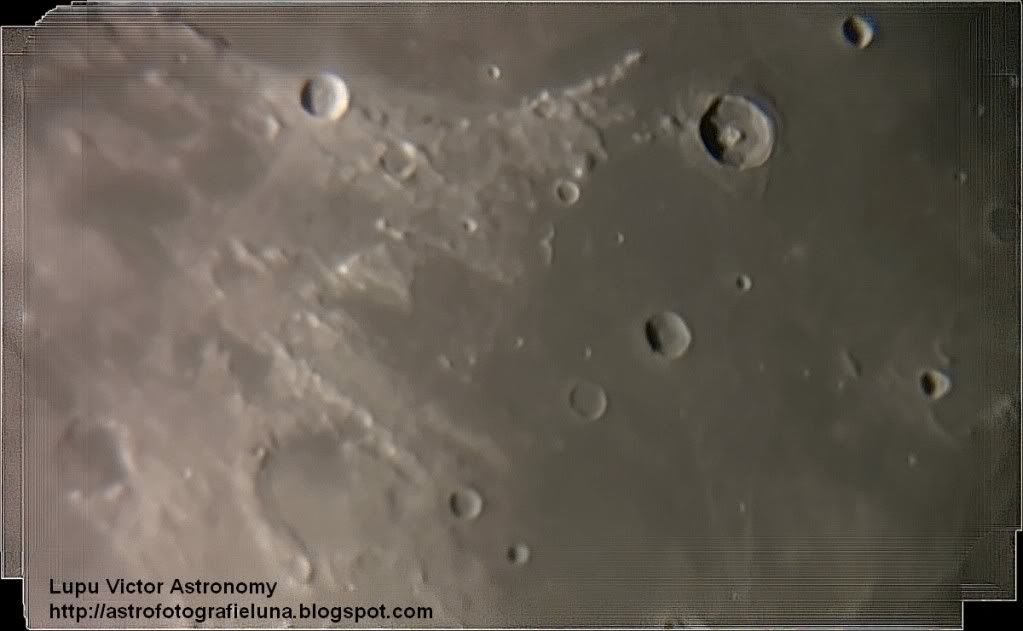We are in an area of the moon with craters small in number on Mare Serenitatis and Mare Tranquillitatis. Most prominent crater, is Plinius (43 km). It is located between the two seas. I've talked many times about it.
These images may be subject and other visible features such as a few lakes, lakes as Gaudii, Lenitatis and Hiemalis, south-west of Menelaus.
Plinius (43 km) is a polygonal crater, prominent, with a crumpled collar and a beautiful rocky floor. At its northern can be found Rimae Plinius, a set of three linear rilles, each about 100 km long, which looks like the cat's scratch. The crater is complex, with several central mountains. The appearance of this crater is changing considerably in different lighting conditions.
On the 'sharp tooth' as of a predator that comes between the two major seas Serenitatis and Tranquillitatis, there are many features, such as Montes Haemus more to root of the 'tooth', crater Menelaus, and at its left are the three lakes which are arranged in a triangle: Gaudii, Hiemalis and Lenitatis. Auwers crater (20 km), lies south-east of Menelaus. We can't go without mentioning Sinus Honoris, which is on the outside of the 'sharp tooth', nor the crater Julius Caesar (90 km.), which can be seen in the left.
Magnitude: -10.82
Phase: 0.46
Distance: 399.283 km
Illuminated: 45.6% (0% = New, 100% = Full)
Astronomical instrument: Celestron C8-Newtonian telescope,
Eyepiece: Plossl 20mm, 2x Barlow
Mount: CG5 (EQ5)
Camera: Sony CX130
Filter: no
Date: 30.01.2012
Location: Baia Mare, Romania
Processing: FastStone Image Viewer
In the picture below are labeled craters and other lunar features in the region. To better understand this photo, you should note that the label with the name or the letter of larger craters could be found at their center, and on the small craters, you should find them around them, usually above.
These images may be subject and other visible features such as a few lakes, lakes as Gaudii, Lenitatis and Hiemalis, south-west of Menelaus.
Plinius (43 km) is a polygonal crater, prominent, with a crumpled collar and a beautiful rocky floor. At its northern can be found Rimae Plinius, a set of three linear rilles, each about 100 km long, which looks like the cat's scratch. The crater is complex, with several central mountains. The appearance of this crater is changing considerably in different lighting conditions.
On the 'sharp tooth' as of a predator that comes between the two major seas Serenitatis and Tranquillitatis, there are many features, such as Montes Haemus more to root of the 'tooth', crater Menelaus, and at its left are the three lakes which are arranged in a triangle: Gaudii, Hiemalis and Lenitatis. Auwers crater (20 km), lies south-east of Menelaus. We can't go without mentioning Sinus Honoris, which is on the outside of the 'sharp tooth', nor the crater Julius Caesar (90 km.), which can be seen in the left.
Magnitude: -10.82
Phase: 0.46
Distance: 399.283 km
Illuminated: 45.6% (0% = New, 100% = Full)
Astronomical instrument: Celestron C8-Newtonian telescope,
Eyepiece: Plossl 20mm, 2x Barlow
Mount: CG5 (EQ5)
Camera: Sony CX130
Filter: no
Date: 30.01.2012
Location: Baia Mare, Romania
Processing: FastStone Image Viewer
In the picture below are labeled craters and other lunar features in the region. To better understand this photo, you should note that the label with the name or the letter of larger craters could be found at their center, and on the small craters, you should find them around them, usually above.
 |
| Photo made on July 20, 2011. |










 Sunday, March 13, 2016
Sunday, March 13, 2016
 Unknown
Unknown






































